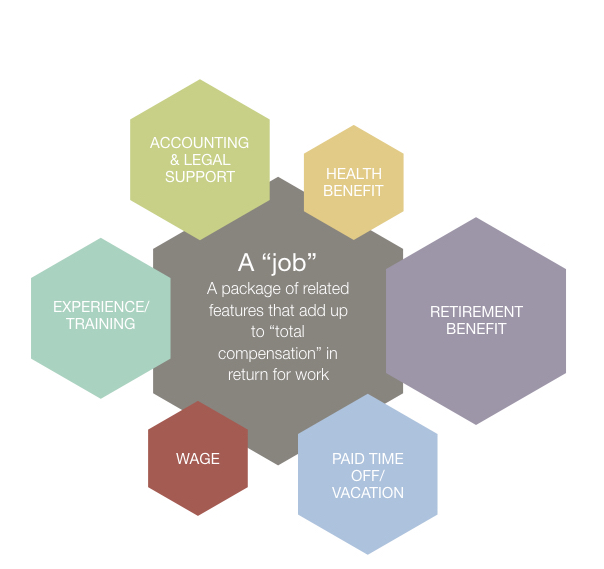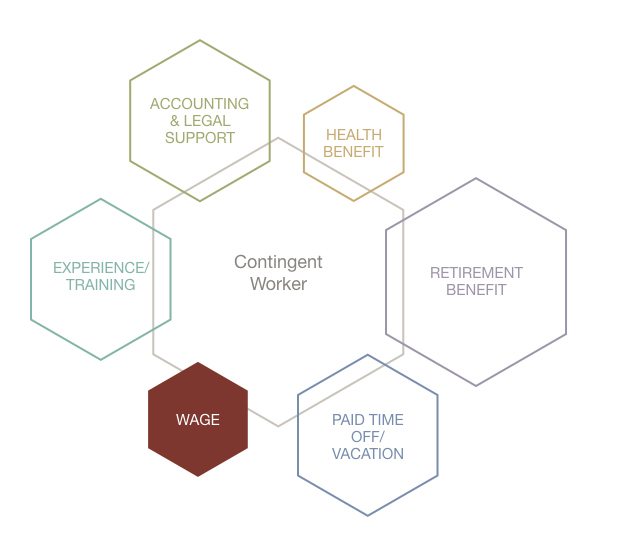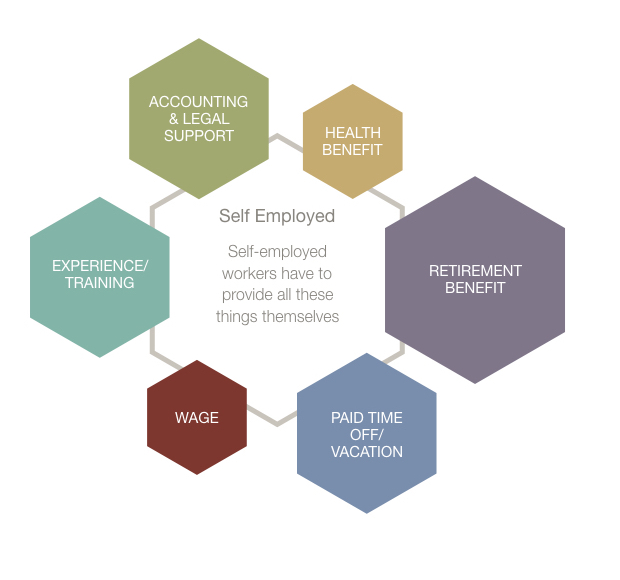The Workplace — A Few Charts
I have tried to use diagrams to explain the vast impact that the never ending search for higher shareholder value has had on the American workplace. Here is my attempt to show what the old workplace looked like in terms of the benefits to a worker …

This diagram demonstrates that a traditional job brought with it a package of “compensation” far beyond a basic wage. It also helps us understand why, as the cost of parts of the package rose rapidly — healthcare costs being the best example — businesses found themselves ever more keen to eliminate parts of the package, or at least to contain the cost by limiting that part of the package paid as cash wages.
Now let us look at the same arrangement as it exists in the contemporary workplace where so-called “contingent” work dominates. This is what the new arrange,ent looks like from the corporate point of view …

Think of how dramatic this change is.
The corporation, in its pursuit of shareholder value, has shed from its cost base a whole slew of ancillary benefits and has reduced its focus simply to the wage. In has, in other words, achieved an ability to zero in on the immediate value of the worker in terms of the work being done. Peripheral costs have been carved away. Profits can rise. The risks inherent in providing long term compensation such as a retirement benefit have been shed altogether.
Now look at the worker side of this …
 The worker, who once received a variety of forms of compensation, all of which added to her sense of security, now receives only a wage. The rest of the old package is gone. More to the point she has to provide all that other stuff out of the wage. If she takes time off for vacation: that’s on her. If she wants to save for retirement: that’s on her, and so on.
The worker, who once received a variety of forms of compensation, all of which added to her sense of security, now receives only a wage. The rest of the old package is gone. More to the point she has to provide all that other stuff out of the wage. If she takes time off for vacation: that’s on her. If she wants to save for retirement: that’s on her, and so on.
This complete re-invention of the package included in the overall compensation paid to workers in the new workplace — a re-invention driven by the pursuit off shareholder value — is what David Weil calls the “fissuring” of the workplace. So let me end with a quote from him to articulate our challenge:
“Federal and State policies are based on a model of employment with a single, well-defined employer with direct responsibility in hiring and firing, managing, training, compensation and development of its workforce.”
“Economic history runs in one direction. As much as we might like aspects of the past, the age of the large corporation directly employing a very wide cross section of American workers has passed”
–David Weil, “The Fissured Workplace”, 2014
